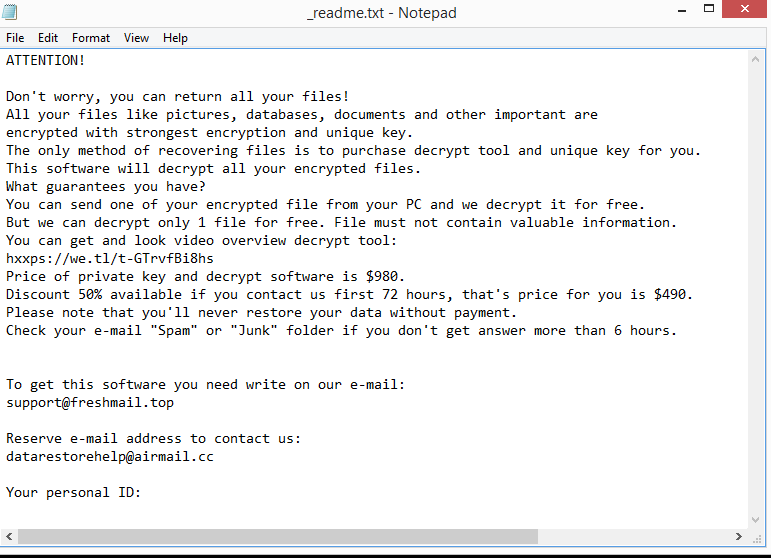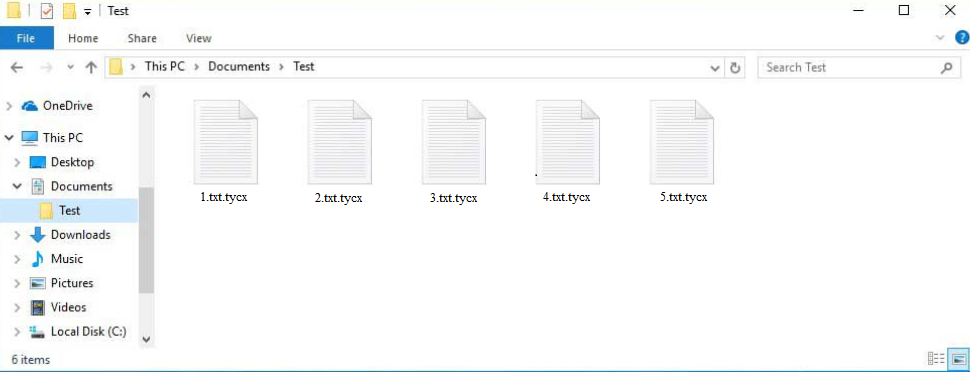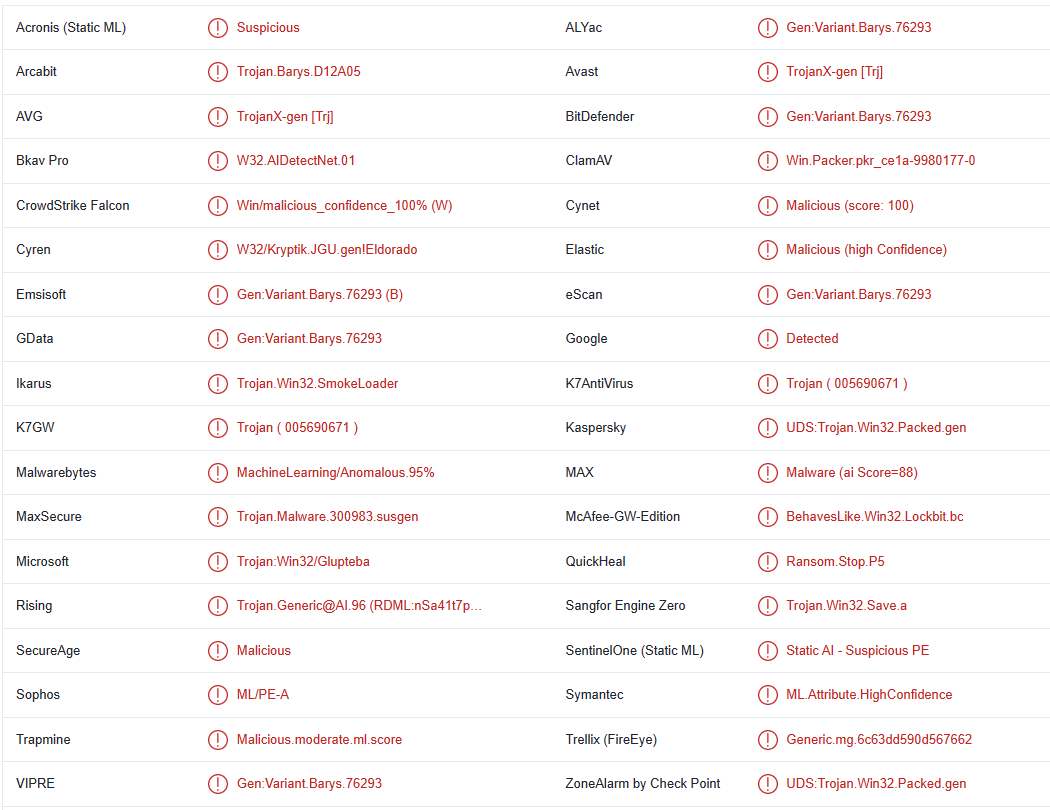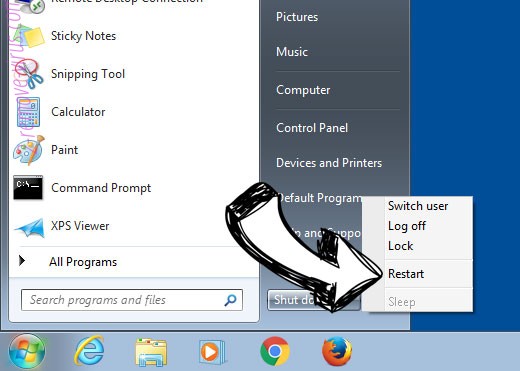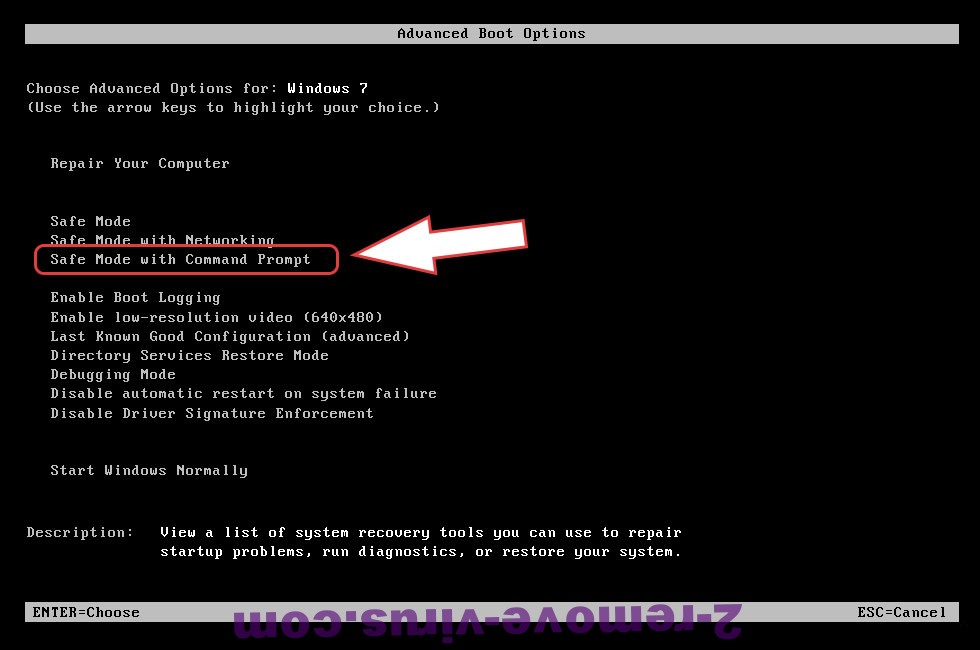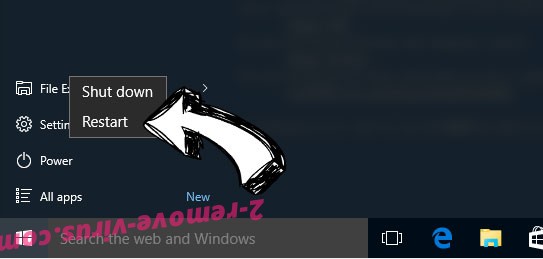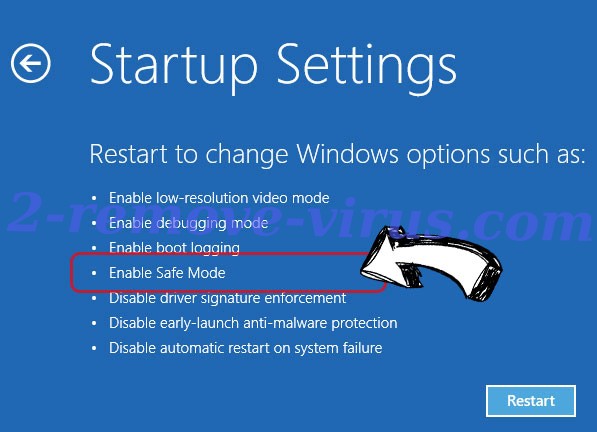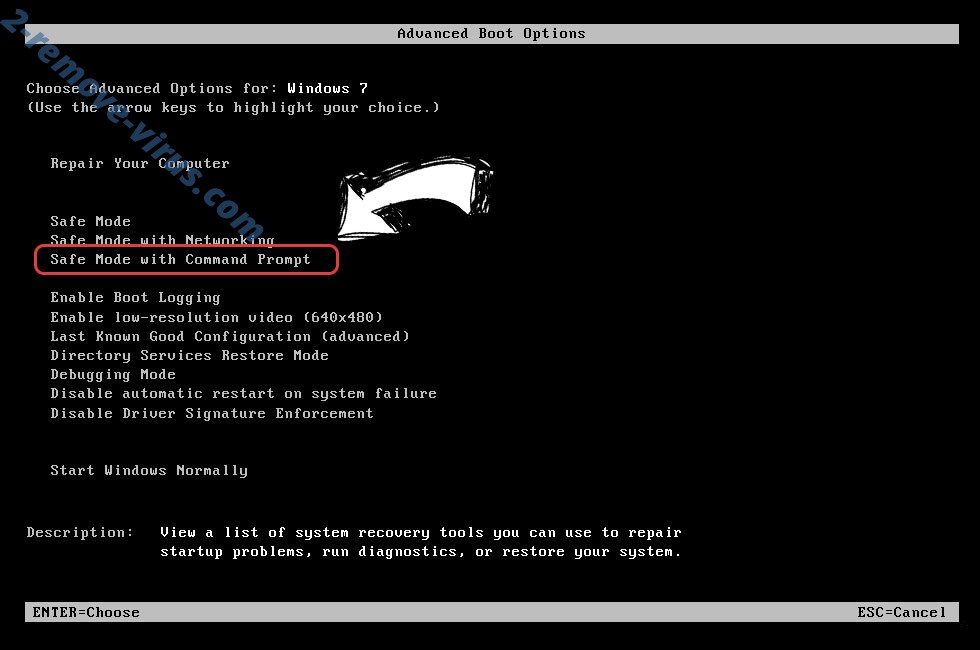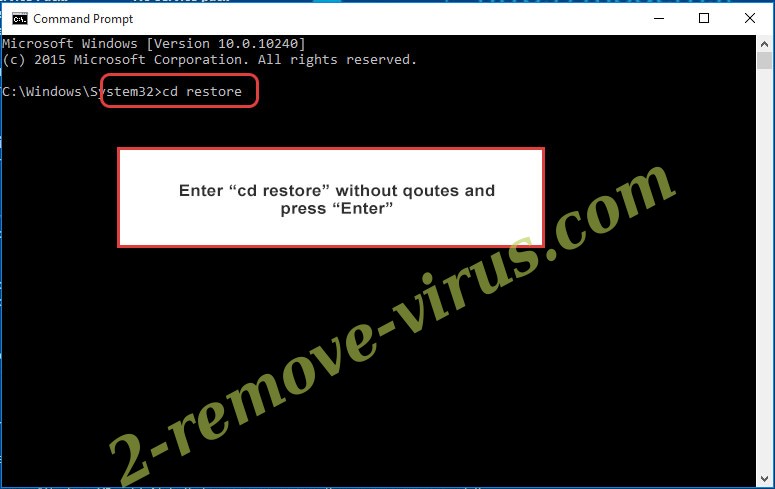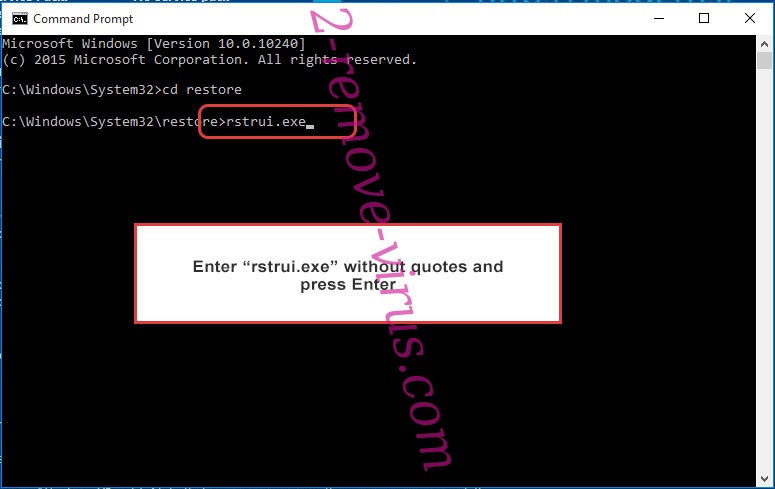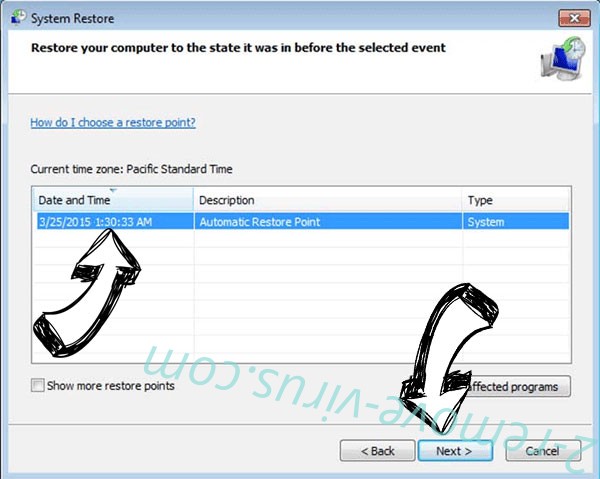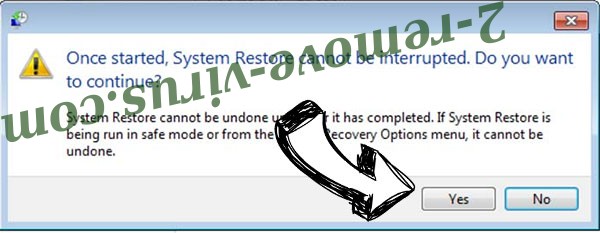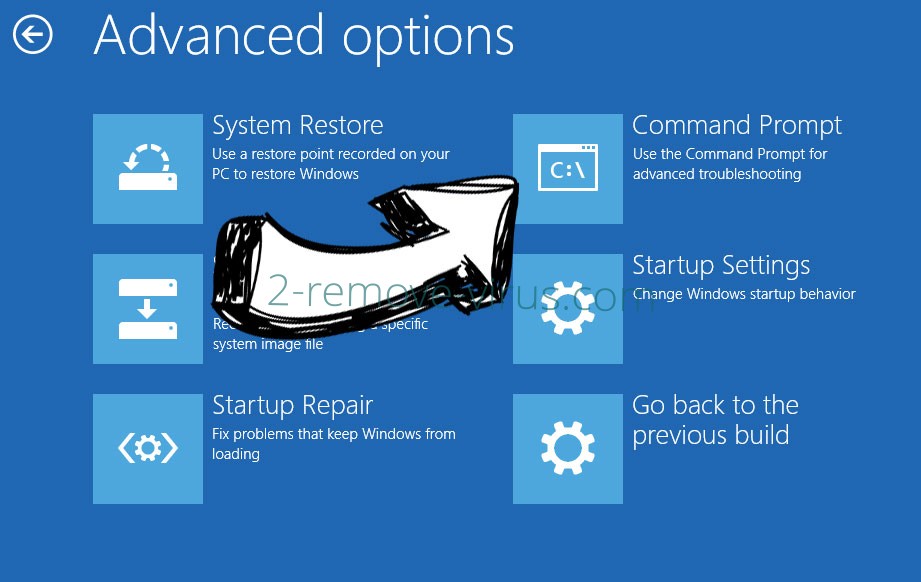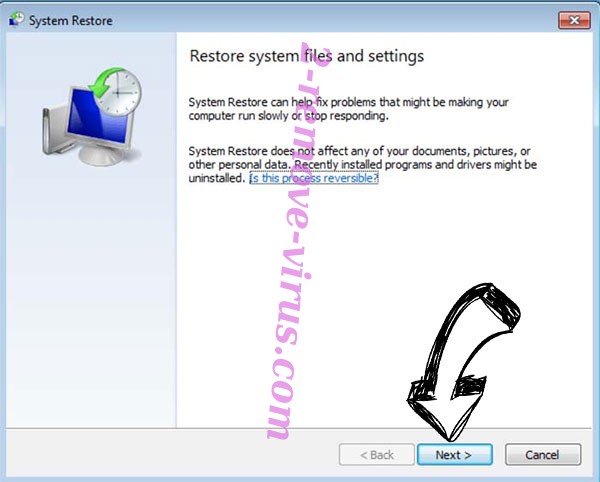Tycx ransomware is a file-encrypting malware, operated by the same cybercriminals behind Djvu/STOP ransomware. Tycx ransomware is essentially another version Djvu. There are hundreds of versions released already, and they’re more or less the same. They can be differentiated by the extensions they add to encrypt files. This one adds .tycx, hence why it’s known as Tycx ransomware. Unfortunately, you will not be able to open any files with this extension unless you first use a special decryptor on them. Acquiring the decryptor will not be easy because the only people who have it are the malware operators. Those with backups should have no issues with file recovery.
Tycx ransomware is part of the Djvu/STOP malware family, which is why it’s so similar to all other versions. The ransomware will target all personal files (photos, videos, documents, etc.) and add .tycx to them. An image.jpg file would become image.jpg.tycx if encrypted. Files with this extension will not be openable unless you first decrypt them. However, the people operating this ransomware will not just give you a decryptor. Instead, they’ll try to sell it to you. But paying is not necessarily a good idea because you will not necessarily get a decryptor.
While it’s encrypting files, the ransomware will display a fake Windows update window. Once it’s finished, all folders that have encrypted files will have _readme.txt ransom notes. The note is the same one that is dropped by other versions of this ransomware family. According to the note, the malware operators are selling a decryptor for $980 but there’s supposedly a 50% discount for users who get in touch with the cybercriminals running this ransomware within the first 72 hours.
The choice of whether to pay the ransom or not is ultimately yours but you do need to be aware of the risks that come with paying. The most important thing to mention is that you will not necessarily get a decryptor even if you pay. Ransomware does not operate like a legitimate business and there’s nothing stopping the operators from just taking the money and not sending anything in return. Cybercriminals are unlikely to feel any kind of obligation to help you. Another thing to mention is that the money you pay would go towards future criminal activities. And as long as victims continue to pay, ransomware will be an issue.
File recovery should be simple if you have a backup of files. But before you access your backup, you first need to remove Tycx ransomware from your computer. It’s best to do that using anti-virus software because the program would take care of everything for you. If you try to do it manually, you may end up causing additional damage to your device. So not only is using anti-virus software easier, but it’s also safer.
If you do not have a backup, there’s not much you can do besides wait for a free Tycx ransomware decryptor to be released. If it does get released, it would appear on NoMoreRansom. But the issue with creating a decryptor for Tycx ransomware is that it uses online keys to encrypt files. This means that the keys are unique to each victim. Unless those keys are released, malware researchers are unlikely to be able to develop a decryptor. All hope is not lost, however. In case a free Tycx ransomware decryptor does get released someday, you should back up your encrypted files and store them safely.
How did ransomware enter your computer?
You should probably change your browsing habits if ransomware was able to infect your computer and encrypt your files. You should take extreme care while opening email attachments, especially those from senders you don’t know. Pirating copyrighted content can also lead to serious malware infections.
Users typically pick up ransomware infections after opening malicious email attachments. Malicious attachments are frequently added to emails that have been written to appear as though they were sent by legitimate companies whose services users use. However, the emails are frequently very poorly done and quite obviously fake. Emails may be disguised as those sent by parcel delivery services, tax agencies, government entities, etc. This tends to pressure users and force them to react quicker without overthinking. But such emails are usually full of grammar/spelling mistakes, which immediately gives them away.
The use of generic phrases like “User,” “Customer,” and “Member” instead of your name while addressing you is another clear indication that an email may be malicious. Legitimate senders will always use names when addressing their customers because it looks unprofessional otherwise. But because malicious actors usually target thousands of users with the same campaign, they use generic words to address users.
Although most malicious emails are relatively straightforward and generic, they might be more sophisticated when they are directed at a specific person. Therefore, it is advised to always check email attachments for viruses using VirusTotal or anti-virus software.
Using torrents to obtain copyrighted material for free amounts to content theft and endangers both your computer and your data. Malicious actors take full advantage of the fact that torrent sites are generally poorly monitored by posting malicious content disguised as torrents for popular movies, video games, TV shows, software, etc.
Tycx ransomware removal
Manual Tycx ransomware removal is not recommended because ransomware is a very sophisticated infection. You can end up doing more harm than good or the ransomware might not be completely gone. Your backed-up files would also get encrypted if you attempted to connect to your backup while the ransomware was still active. Thus, you should use anti-malware software to remove Tycx ransomware. You should only access your backup when you are absolutely certain the ransomware is no longer on your computer.
If you don’t have a backup, we advise backing up encrypted files in case a free Tycx ransomware decryptor is ever released. It should also be noted that a lot of fake decryptors are advertised on dubious websites and forums. The decryptors posted on questionable forums won’t be legitimate if you can’t find one on a reliable site like NoMoreRansom.
Tycx ransomware is detected as:
- TrojanX-gen [Trj] by AVG/Avast
- MachineLearning/Anomalous.95% by Malwarebytes
- Trojan:Win32/Glupteba by Microsoft
- Gen:Variant.Barys.76293 by BitDefender
- UDS:Trojan.Win32.Packed.gen by Kaspersky
- ML.Attribute.HighConfidence by Symantec
Quick Menu
Step 1. Delete Tycx ransomware using Safe Mode with Networking.
Remove Tycx ransomware from Windows 7/Windows Vista/Windows XP
- Click on Start and select Shutdown.
- Choose Restart and click OK.

- Start tapping F8 when your PC starts loading.
- Under Advanced Boot Options, choose Safe Mode with Networking.

- Open your browser and download the anti-malware utility.
- Use the utility to remove Tycx ransomware
Remove Tycx ransomware from Windows 8/Windows 10
- On the Windows login screen, press the Power button.
- Tap and hold Shift and select Restart.

- Go to Troubleshoot → Advanced options → Start Settings.
- Choose Enable Safe Mode or Safe Mode with Networking under Startup Settings.

- Click Restart.
- Open your web browser and download the malware remover.
- Use the software to delete Tycx ransomware
Step 2. Restore Your Files using System Restore
Delete Tycx ransomware from Windows 7/Windows Vista/Windows XP
- Click Start and choose Shutdown.
- Select Restart and OK

- When your PC starts loading, press F8 repeatedly to open Advanced Boot Options
- Choose Command Prompt from the list.

- Type in cd restore and tap Enter.

- Type in rstrui.exe and press Enter.

- Click Next in the new window and select the restore point prior to the infection.

- Click Next again and click Yes to begin the system restore.

Delete Tycx ransomware from Windows 8/Windows 10
- Click the Power button on the Windows login screen.
- Press and hold Shift and click Restart.

- Choose Troubleshoot and go to Advanced options.
- Select Command Prompt and click Restart.

- In Command Prompt, input cd restore and tap Enter.

- Type in rstrui.exe and tap Enter again.

- Click Next in the new System Restore window.

- Choose the restore point prior to the infection.

- Click Next and then click Yes to restore your system.

Offers
Download Removal Toolto scan for Tycx ransomwareUse our recommended removal tool to scan for Tycx ransomware. Trial version of provides detection of computer threats like Tycx ransomware and assists in its removal for FREE. You can delete detected registry entries, files and processes yourself or purchase a full version.
More information about SpyWarrior and Uninstall Instructions. Please review SpyWarrior EULA and Privacy Policy. SpyWarrior scanner is free. If it detects a malware, purchase its full version to remove it.

WiperSoft Review Details WiperSoft (www.wipersoft.com) is a security tool that provides real-time security from potential threats. Nowadays, many users tend to download free software from the Intern ...
Download|more


Is MacKeeper a virus? MacKeeper is not a virus, nor is it a scam. While there are various opinions about the program on the Internet, a lot of the people who so notoriously hate the program have neve ...
Download|more


While the creators of MalwareBytes anti-malware have not been in this business for long time, they make up for it with their enthusiastic approach. Statistic from such websites like CNET shows that th ...
Download|more
Site Disclaimer
2-remove-virus.com is not sponsored, owned, affiliated, or linked to malware developers or distributors that are referenced in this article. The article does not promote or endorse any type of malware. We aim at providing useful information that will help computer users to detect and eliminate the unwanted malicious programs from their computers. This can be done manually by following the instructions presented in the article or automatically by implementing the suggested anti-malware tools.
The article is only meant to be used for educational purposes. If you follow the instructions given in the article, you agree to be contracted by the disclaimer. We do not guarantee that the artcile will present you with a solution that removes the malign threats completely. Malware changes constantly, which is why, in some cases, it may be difficult to clean the computer fully by using only the manual removal instructions.
